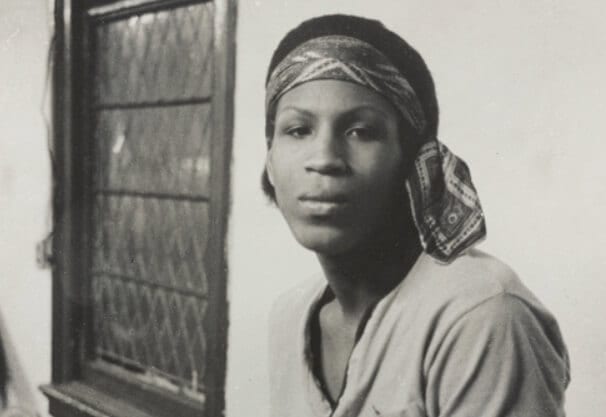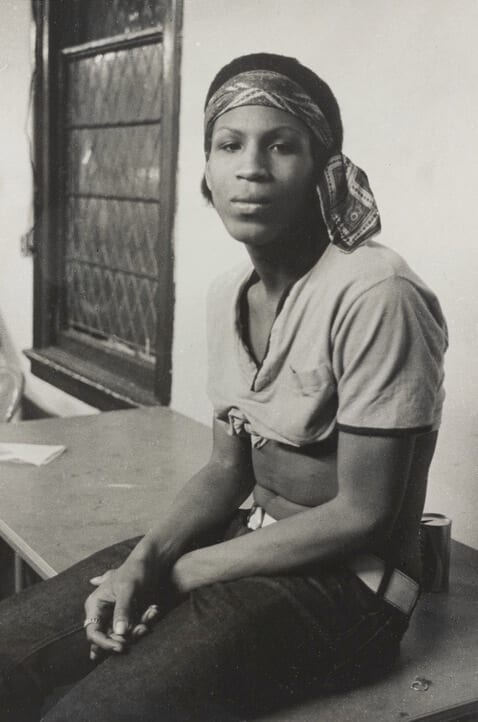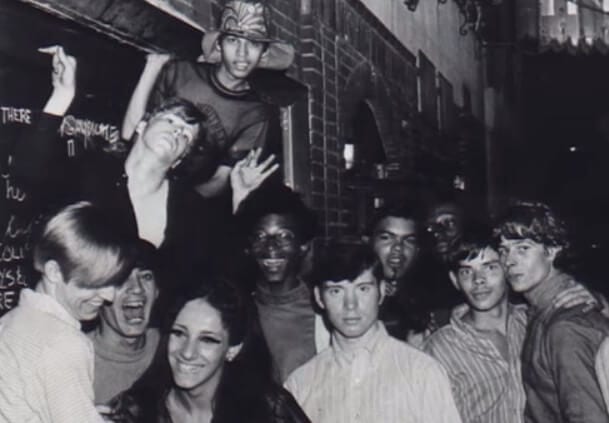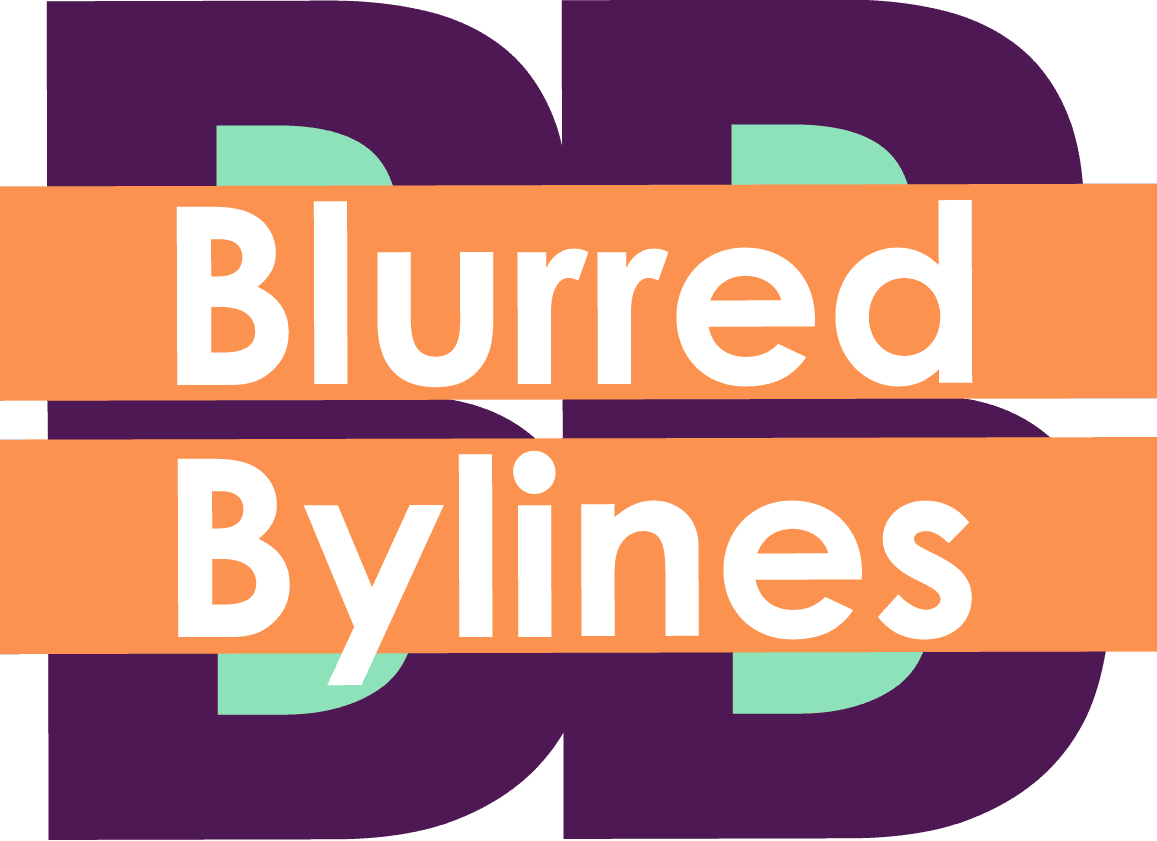Zazu Nova’s Legacy at Stonewall Deserves Recognition

Zazu Nova attends a Gay Liberation Front meeting in 1970. (Source: Diana Davies / NYPL)
November 25, 2020 ~ By Shari Rose
Zazu Nova fought alongside Marsha P. Johnson during Stonewall and continued to fight for LGBTQ rights in the years that followed
The events of the Stonewall Riots, also known as the Stonewall Uprising, are widely understood as a key part of the burgeoning gay rights movement during the 1960s. What’s less known, however, are some of the people directly involved in those confrontations with police and the growing gay revolution. Often erased from LGBTQ history, Zazu Nova was a transgender woman at the forefront of fights with police at Stonewall, and she continued to fight for gay and trans rights into the next decade. She is even considered to be one of three people who threw the “first brick.”

Zazu Nova Queen of Sex. (Source: Diana Davies / NYPL)
Zazu Nova’s Life Before Stonewall
During summer 1969, Zazu Nova was a regular at the Stonewall Inn. A Black transgender woman, she worked on the same street as Stonewall, Christopher Street, in Greenwich Village. Not much is known about her life, and her name is typically omitted in coverage of Stonewall or the gay liberation movement. Nevertheless, it’s widely believed that Nova, whose full name is Zazu Nova Queen of Sex, was raised in upstate New York. She had a strong religious upbringing, and remained ardently committed to the Unitarian faith into adulthood.
Zazu Nova stood over six feet tall with broad shoulders and large hands. She was sent to prison multiple times, though her convictions are unknown. Rumor has it she went to prison for murder, but there is no evidence of that. According to “Stonewall: The Riots That Sparked the Gay Revolution,” Zazu Nova and a friend were accosted by a group of five men while walking through the city one night. As the group yelled transphobic slurs and other disparaging comments, it became clear they wanted to beat up the pair. So, Zazu Nova quickly reached into her purse and pulled out a heavy chain with an anchor attached to one end that “could tie up a truck.” As she swung it around, the five men fled.
Formation of LGBTQ Rights Groups Amid Police Raids, Brutality

2016 photo of the Stonewall Inn with a large memorial for the Orlando Pulse shooting victims. (Source)
Before Stonewall, LGBTQ rights groups were already forming across the U.S. as the community rose up and demanded change during social revolutions and political upheavals of the 1960s. All-too-common police beatings in Los Angeles, San Francisco and other major cities incited small-scale LGBTQ demonstrations and protests. Activists called for an end to police brutality against gay and trans people, the right to gather together without harassment, the right to serve in the military, and other basic freedoms.
As was the case with a number of police forces throughout the country, the New York Police Department routinely raided gay bars and clubs, arrested workers, and beat up patrons. Customers who didn’t have IDs or were dressed in drag were also arrested. Long-simmering anger at police mistreatment was brewing in the LGBTQ community as more and more street youths and drag queens in particular grew fed up with police attacks on the one place they felt safe and accepted.
More stories: Amelio Robles Ávila: Transgender Fighter In Mexican Revolution
More stories: Lucy Hicks Anderson: Black Transgender Pioneer of the 1940s
More resources from Shari Rose: Bi’s in Biz – Directory for LGBTQ Business Owners
What Happened During the Stonewall Uprising
The police raid on Stonewall Inn in the morning of June 28, 1969, was different than any other raid. During previous attacks, patrons ran from the establishment as police beat and arrested people. But this time, patrons refused to flee, and instead gathered right outside on the street and heckled officers as they tried to load people into a police van. More LGBTQ people from the neighborhood, including Zazu Nova, joined the swelling crowd and continued to taunt police officers as they arrested their friends and neighbors.

A group of LGBTQ youth pose in front of the Stonewall Inn in undated photo. (Source)
There is some debate as to which pivotal moment started the Stonewall Uprising, but it’s clear the crowd grew more agitated as police continued to beat and rough up those they arrested. When one cop punched a lesbian on the head while forcing her into a vehicle, she yelled at the group to do something. It’s believed that encouraged onlookers to throw bottles and coins at police. When that failed to stop the beatings, the crowd picked up bricks and cobblestones from a nearby construction site and hurled them at officers. At the forefront of this fight were mostly trans women, drag queens, and butch lesbians.
Share Zazu’s story
 |
 |
 |
 |
 |
 |
The aforementioned “Stonewall” book identifies three people who witnesses say threw the “first brick”: Marsha P. Johnson, Sylvia Rivera, and Zazu Nova. Differing witness accounts from that day place each person as the thrower. Today, Johnson is largely believed to be the “first brick” thrower, though those accounts are “generally second- or even thirdhand.”
In any case, the crowd quickly followed suit in throwing bricks, stones and other raw materials at police. Surprised by this level of resistance from the LGBTQ crowd, about half a dozen police officers retreated, heading for the Stonewall Inn. In a complete role reversal, the bar’s patrons chased them into the building.
Police called for backup, and even the squad of anti-riot officers clad in full gear struggled to contain the uprising. When they rushed the demonstrators, the crowd simply ran around the block and regrouped behind the wall of officers. Eventually, police dispersed the group for the night, but the following several days saw more protests and violence.
Regardless of who actually threw the first brick, the gay rights movement was already in motion, and the Stonewall Uprising was an important piece of helping those social changes become a reality. Historical accounts generally attribute the ongoing momentum against police during Stonewall to the younger LGBTQ kids, older drag queens and transgender people, like Zazu Nova. Many of those who were part of Stonewall protests in the days that followed were already part of other social movements, like the civil rights movement and anti-Vietnam War demonstrations.
More stories: What Daughters of Bilitis Achieved for Lesbian Rights in the 1960s
More stories: Crystal LaBeija: Iconic Drag Queen Who Transformed Queer Culture
More stories: Dykes on Bikes & Gay Motorcycle Clubs in the U.S.
Zazu Nova’s Activism After Stonewall
Zazu Nova Queen of Sex became a founding member of the first organization exclusively for LGBTQ youth, New York City’s Gay Youth in 1970. Because the Gay Liberation Front typically accepted members 21 and over, Nova’s offshoot organization provided support and a safe haven for gay and trans people too young to join the GLF. Marsha P. Johnson and Sylvia Rivera formed a different offshoot organization called Street Transvestite Action Revolutionaries, which provided housing for gay youth on the street and support for gay prisoners.

Members of the Gay Liberation Front join anti-Vietnam War protesters at a demonstration in Washington, DC in 1970.
Erasure of the transgender experience, particularly erasure of Black and Latinx transgender people in LGBTQ history continues to persist. For example, the whitewashed 2015 film, Stonewall, portrays a fictional white teenage boy as the thrower of the first brick and includes a nearly all-white cast. Inaccurate portrayals like this erase the contributions that Black and Latinx LGBTQ folks, especially transgender people and drag queens, played in fighting against normalized police brutality and discrimination at Stonewall as well as growing the gay liberation movement.
With regard to Zazu Nova, there are no known interviews with her, and much of her life remains unknown. But we do know that Zazu Nova Queen of Sex was there, she fought, and she continued fighting for the rights of LGBTQ people.
More stories: These Corporations Don A Rainbow Flag & Donate To Anti-LGBTQ Lawmakers
More stories: Corporations Embolden Hate When They Cave to Anti-LGBTQ Fury
More stories: Why Is Bisexuality an Invisible Majority in the LGBTQ Community?
More stories: How Lani Ka’ahumanu Pushed For Bisexual Visibility in the U.S.







0 Comments